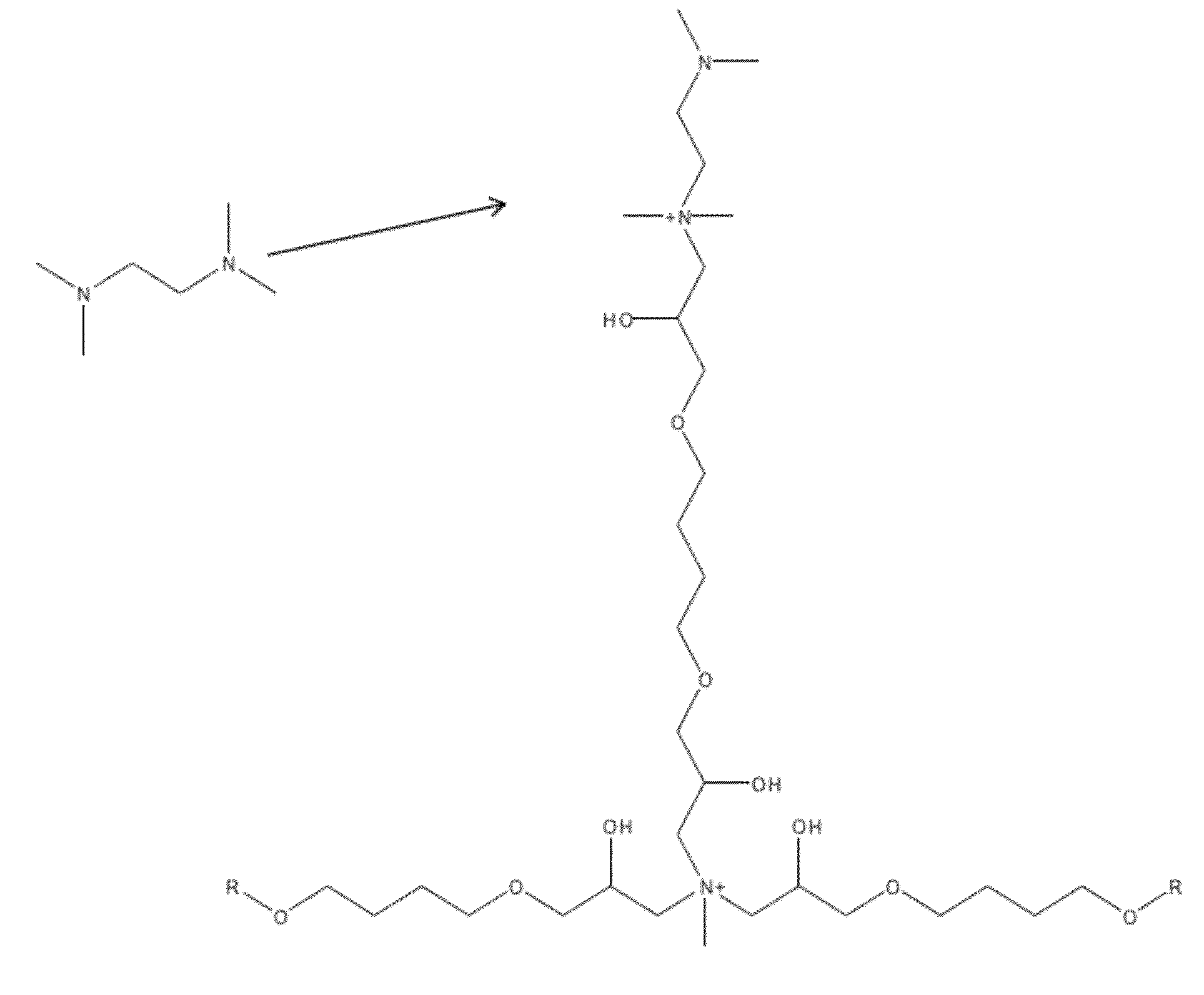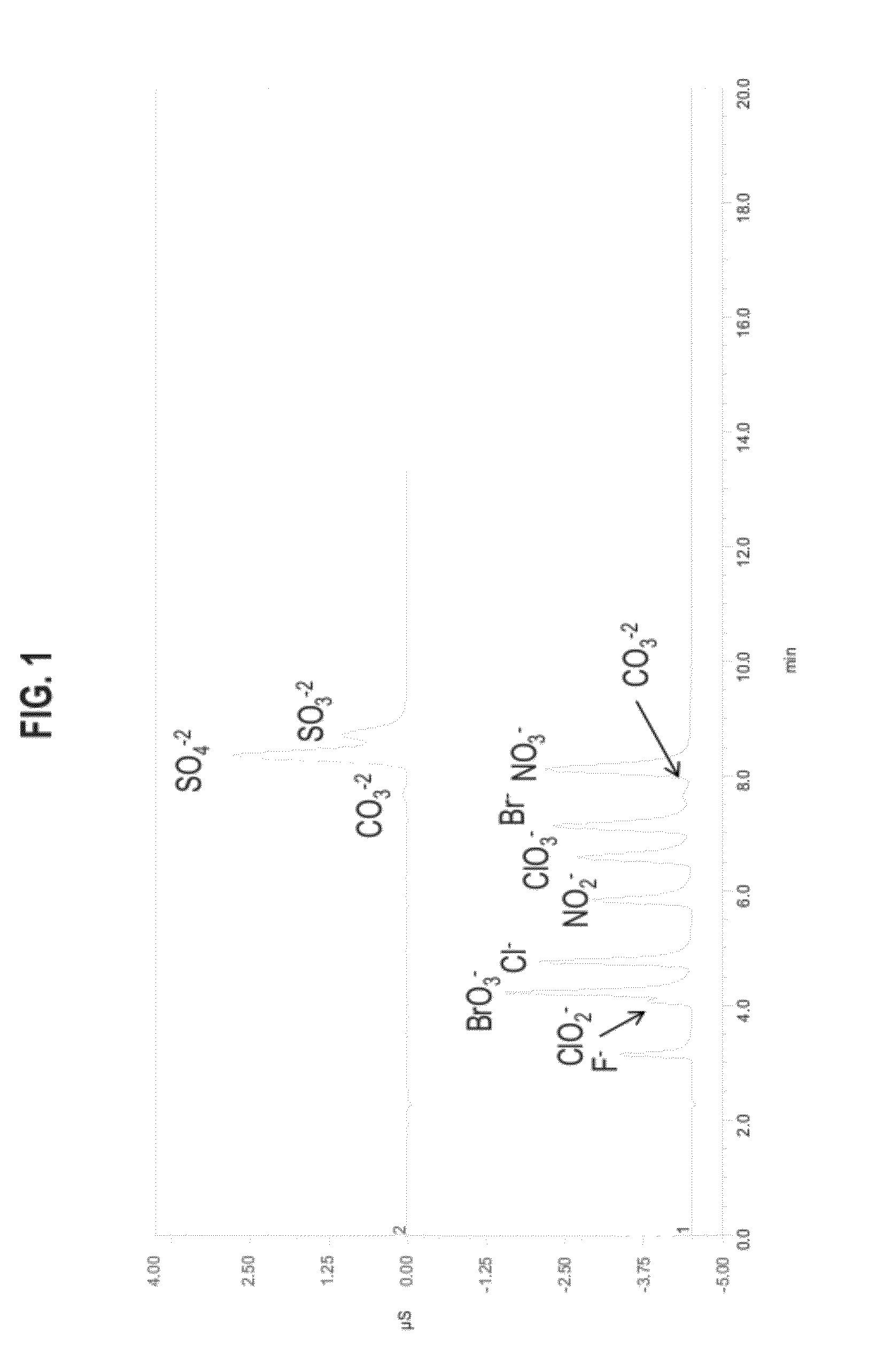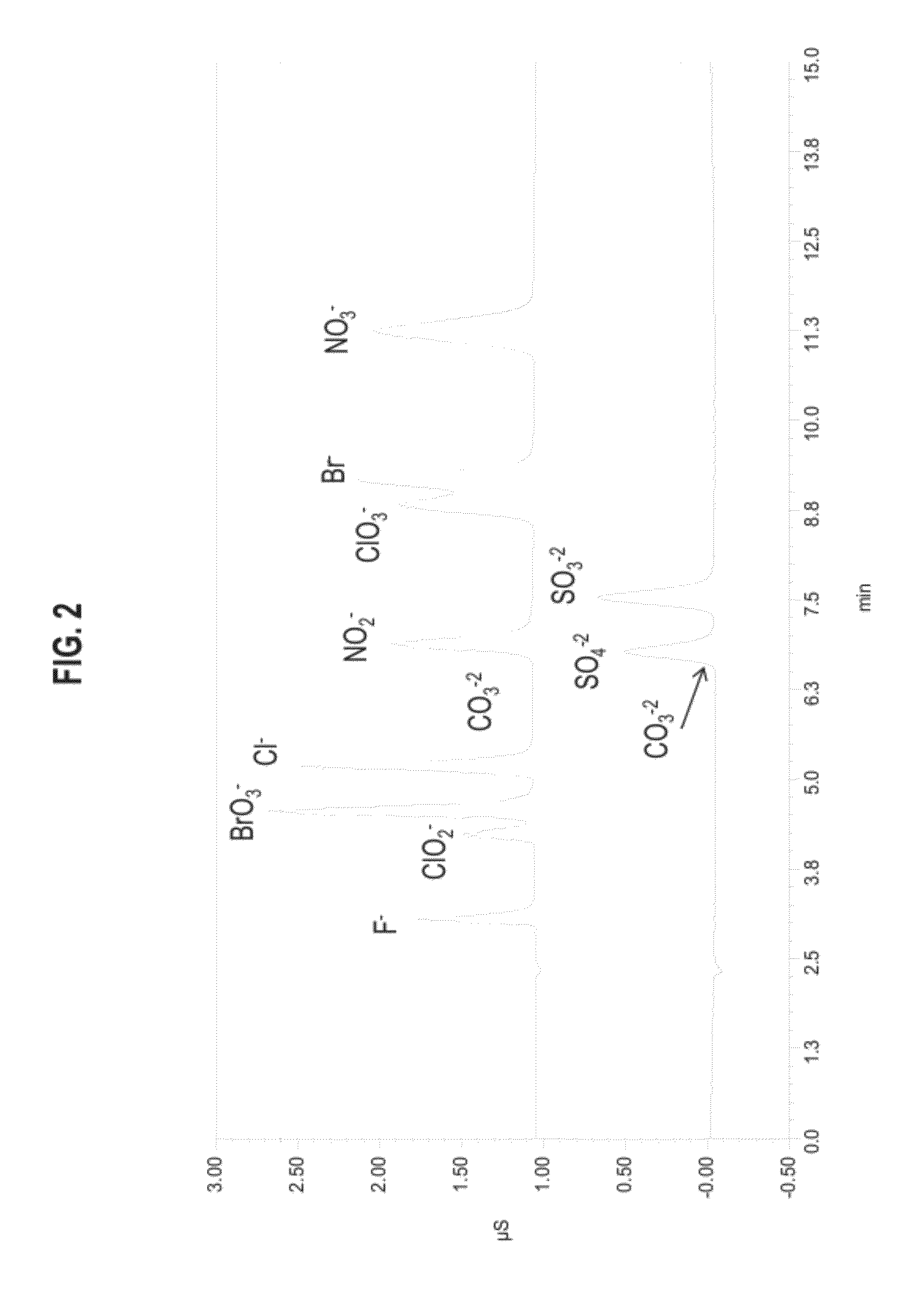Electrostatically bound hyperbranched anion exchange surface coating prepared via condensation polymerization using ditertiary amine linkers for improved divalent anion selectivity
a divalent anion selectivity and hyperbranched anion exchange technology, applied in the field of coating ion exchange materials, can solve the problems of increasing manufacturing time and labor, taking a substantial period of time, and optimizing the packing column
- Summary
- Abstract
- Description
- Claims
- Application Information
AI Technical Summary
Benefits of technology
Problems solved by technology
Method used
Image
Examples
example 1
[0162]A surface sulfonated substrate composed of a divinylbenzene-ethylvinylbenzene co-polymer with an average particle size of 6 microns and surface area of 18 m2 / gram is packed into a 4 mm column after which the initial ground layer is prepared at 65° C. by passing an equimolar mixture of butanediol diglycidyl ether and methyl amine (both approximately 0.39 molar) over the substrate for 10 minutes. The reaction mixture is then allowed to react in the column for 60 minutes (step one). The reaction mixture is then rinsed from the column with deionized water for five minutes. Following this, a 10% solution of butanediol diglycidyl ether in water is passed over the column for 10 minutes and then allowed to react for 20 minutes while at 65° C. (step two). The reaction mixture is then rinsed from the column with deionized water for five minutes. Following this, a one molar solution of 1,3-Bis(dimethylamino)-2-propanol is passed over the column for 10 minutes and then allowed to react fo...
example 2
[0163]Columns were tested on a DX500 ion chromatography system consisting of a GP40 gradient pump, an AS50 autosampler with TC column compartment, an ED50 conductivity / electrochemical detector, an EG40 eluent generator containing an EGC-II KOH cartridge and CR-ATC. The system utilized Chromeleon 6.8 software for collection and analysis of data. Also the concentration of the mobile phase was varied, in general the operating conditions were 40 mM potassium hydroxide at 1 mL per minute and 30° C. A 5 μL injection volume was used. Sample concentrations were in the 1-10 ppm range.
example 3
[0164]A surface sulfonated substrate composed of a divinylbenzene ethylvinylbenzene co-polymer with an average particle size of 6 microns and surface area of 18 m2 / gram is packed into a 4 mm column after which the initial ground layer is prepared at 74° C. by passing an equimolar mixture of butanediol diglycidyl ether and methyl amine (both approximately 0.39 molar) over the substrate for 10 minutes. The reaction mixture is then allowed to react in the column for 60 minutes (step one). The reaction mixture is then rinsed from the column with deionized water for five minutes. Following this, a 10% solution of butanediol diglycidyl ether in water is passed over the column for 10 minutes and then allowed to react for 20 minutes while at 74° C. (step two). The reaction mixture is then rinsed from the column with deionized water for five minutes. Following this, a 1.29 molar solution of dimethyl amine is passed over the column for 10 minutes and then allowed to react for 20 minutes while...
PUM
| Property | Measurement | Unit |
|---|---|---|
| internal diameter | aaaaa | aaaaa |
| temperature | aaaaa | aaaaa |
| temperature | aaaaa | aaaaa |
Abstract
Description
Claims
Application Information
 Login to View More
Login to View More - R&D
- Intellectual Property
- Life Sciences
- Materials
- Tech Scout
- Unparalleled Data Quality
- Higher Quality Content
- 60% Fewer Hallucinations
Browse by: Latest US Patents, China's latest patents, Technical Efficacy Thesaurus, Application Domain, Technology Topic, Popular Technical Reports.
© 2025 PatSnap. All rights reserved.Legal|Privacy policy|Modern Slavery Act Transparency Statement|Sitemap|About US| Contact US: help@patsnap.com



